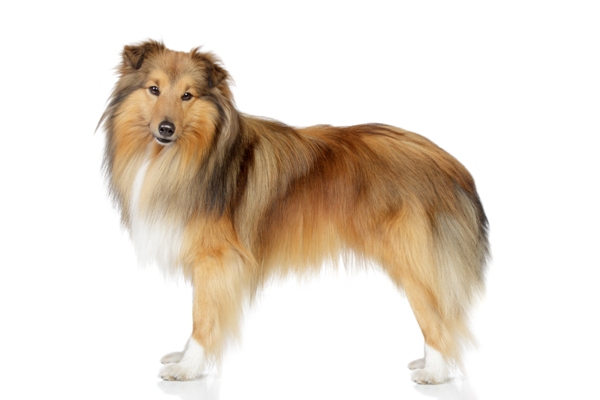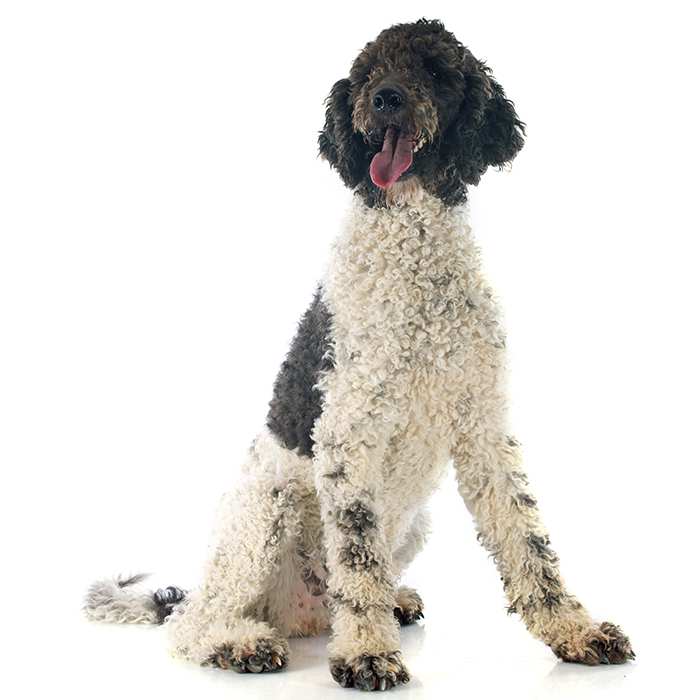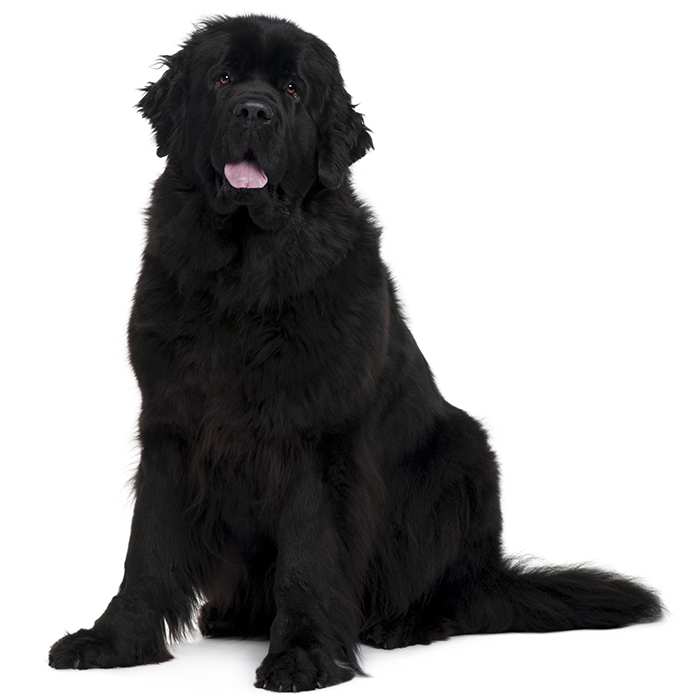Shetland Sheepdog
Active, loyal
This breed is in the lower risk category for developing health issues, hence it is one of the most affordable breeds to insure.
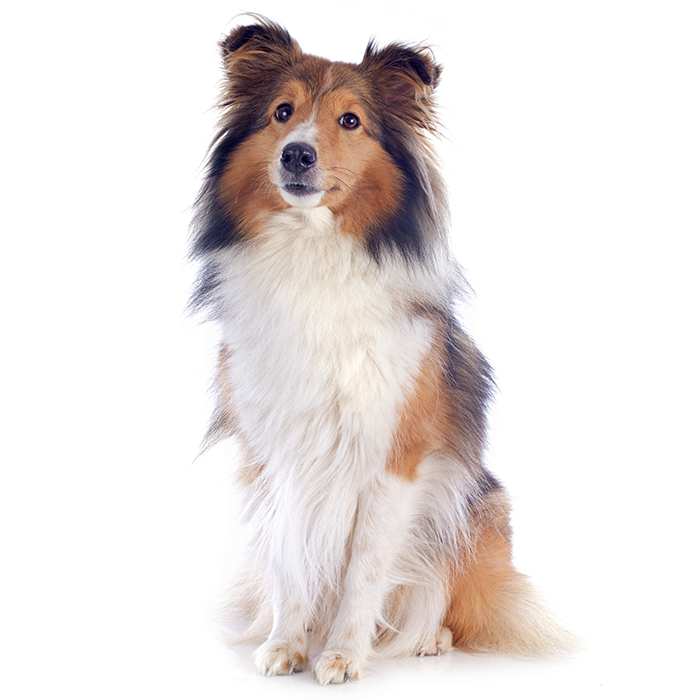
Is this breed right for you?
Try our breed selector quiz to find out your best matching breed!
Insuring a Shetland Sheepdog?
Get award-winning cover with more benefits and up to 80% of eligible vet bills reimbursed. Find out about your cover options.
Get a quick quoteBreed Overview
The Shetland Sheepdog is a small to medium-sized herding dog that was developed in the Shetland Islands several hundred years ago, primarily for the purpose of guarding and herding sheep. The small size of the dog can be explained by its Spitz-type ancestry. The modern Shetland Sheepdog is believed to be a mix of a number of breeds, including the Rough Collie, the King Charles Spaniel, the Pomeranian and possibly the Border Collie.
Armed with a thick, long-haired coat, the Shetland Sheep dog comes in a variety of colours, including blue merle, sable and tri-colour. Loyal, hard-working and protective, with their small size making them less intimidating for young children, they have developed into a highly sought-after family companion with a great reputation for gentle play.
As a working dog, Shetland Sheepdogs are both extremely intelligent and highly energetic. The breed is a popular choice for active families with plenty of space for running and exploring. The breed is very enthusiastic for exercise and is known for its excitable nature. They require the dedication of a family that will provide continued mental and physical stimulation throughout their life. A loyal, people-orientated dog, the Shetland Sheepdog needs consistent human contact; if left alone for any extended period of time, the breed tends to develop separation anxiety.
The breed is known for its intelligence, its hard-working nature and its keen desire to please its owner. For this reason, Shetland Sheepdogs are very trainable and are popular competition dogs in the United Kingdom, the United States and Australia.
The average Shetland Sheepdog will grow to between 33 and 41cm tall and a healthy example should weigh somewhere between 8 and 12kgs. Shetland Sheepdogs will generally live to the age of 12 or 13 years.
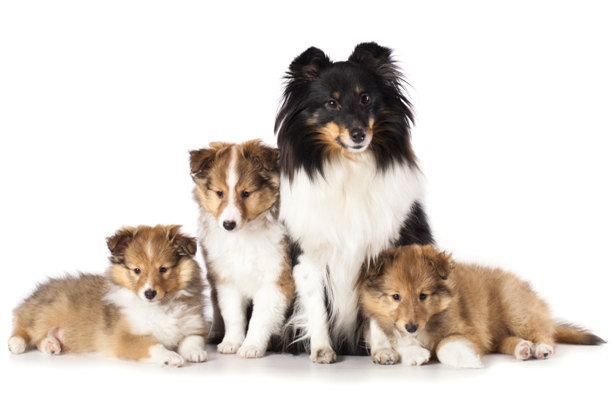
Personality and Temperament
Shetland Sheepdogs are extremely energetic dogs that thrive on human contact and large amounts of physical work. They love to go running, playing fetch and accomplishing just about any task you can set for them.
Very people-orientated dogs, the Shetland Sheepdog is extremely loyal to its family. The breed requires a great deal of human contact to remain happy or else behavioural problems can arise. Dogs who are left alone for extended periods of time may develop separation anxiety. Separation anxiety can cause the Shetland Sheepdog to bark, become depressed and even become aggressive towards other animals.
Behavioural issues can be easily addressed or avoided by affording your Shetland Sheepdog a lot of physical and mental stimulation. Ball games and a long walk at least daily is a must for the Shetland Sheepdog’s peace of mind. A good run once in a while is even better.
Shetland Sheepdogs are generally very good with children yet, like many working dog breeds, they can be snappy if prodded and pestered too much. Generally very patient, the excitable Shetland Sheepdog may prove too much to handle for younger children. It’s best that playtime be supervised by an adult and that the child be taught to treat the animal with respect.
The breed is best suited to the outdoors. While they can live in the home, they will require a substantial backyard to explore. Their working dog heritage means that they will need to run about to deal with their high levels of energy.
Shetland Sheepdogs rarely show aggression towards other animals and will, in most cases, cohabitate with other pets peacefully. When meeting another Shetland Sheepdog in a public place, the breed will become playful and show a great deal of friendliness rather than try to assert its dominance.
Common Shetland Sheepdog Diseases & Conditions
Symptoms, diagnosis and treatment
- Von Willebrand’s Disease. Fairly common in the Shetland Sheepdog, Von Willebrand’s Disease is a hereditary bleeding disorder that causes clotting problems in the blood. When a dog has too few platelets, clotting fails to occur when the dog suffers a wound or injury. If left untreated, the disease can lead to excessive bleeding and even death.
Progressive Retinal Atrophy (PRA) is a hereditary disease that affects the dog’s vision and can lead to blindness. The nerve cells at the back of the eye degenerate over time, initially causing night-blindness. If you suspect your dog has signs of PRA, see your vet as soon as possible – if there is still vision in the eye, corrective surgery may be an option.
- Hip Dysplasia. Although not common in Shetland Sheepdog, hip dysplasia does occur in the breed. This is a hereditary condition where the hip doesn’t form properly while the dog is growing, leading to painful arthritis in the joint and lameness over time.
- Hypothyroidism occurs when the thyroid gland doesn’t produce adequate amounts of thyroid hormone, usually because of inflammation. Some symptoms of hypothyroidism include abnormal weight gain, dry skin, hair loss, ear infections, and lethargic behaviour.
- Collie Eye Anomaly (CEA). Like all collie types, the Shetland Sheepdog is susceptible to CEA. The condition is an inherited disease that affects the retina, choroid and sclera of the eye. The disease can result in severely limited eyesight and possibly lead to total blindness. A prominent sign of the condition is a pale spot on the eye. See your vet if you have any concerns for your Shetland Sheepdog’s eyes. At this time there is no treatment for the condition.
Not all conditions are covered by Pet Insurance. For details of Bow Wow Meow Pet Insurance cover, refer to the Product Disclosure Statement.
What do Shetland Sheepdog owners claim for the most?
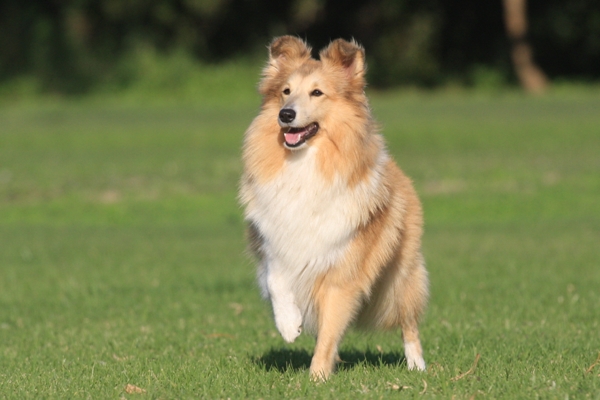
History
The Shetland Sheepdog was developed as a companion animal and working dog for the farmers of the Shetland Islands. The rugged wind-swept landscape meant a hardy and dependable dog was required to herd and guard flocks of sheep in all kinds of treacherous weather. The Shetland Sheepdog, much like the diminutive pony that is named for the same place, developed to be small in stature but determined in its nature. It has been suggested that the unforgiving environment of the Shetland Islands may have contributed to the dog’s smaller size.
The breed was not developed by selectively breeding the Rough Collie. The origins of the Shetland Sheepdog is much more complex, being tied up in a number of dog breeds, including the Rough Collie, the Pomeranian, the King Charles Spaniel and perhaps the Border Collie. It is believed that the now extinct Greenland Yakki, a heavy-coated and strong working dog, is also one of the Shetland Sheepdog’s many ancestors.
Because of the Shetland Islands’ isolation from the Scottish mainland, the Shetland Sheepdog remained solely a working dog right up until the early 20th Century. It wasn’t until 1909 that the Shetland Sheepdog made its debut on the dog show scene. The first example to be introduced to the United States arrived in 1911 and was registered with the American Kennel Club upon its arrival.
Since that time, the Shetland Sheepdog has proven itself to be a popular show dog and effective competitor in obedience competitions. Their keen desire to please their owners, combined with a strong protective instinct, has made the breed a popular choice among those living in rural areas for generations. Today, the Shetland Sheepdog remains a popular breed in the United States, the United Kingdom and Australia.
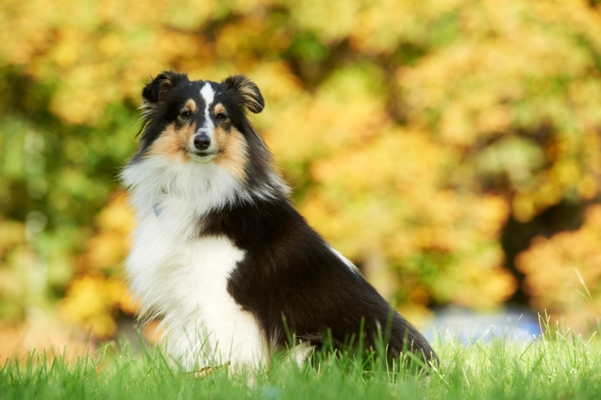
Shetland Sheepdog Facts!
- Because they have served for centuries as herding dogs, the Shetland Sheepdog has a reputation for trying to herd just about anything – from its owners to flocks of pigeons to house cats!
- Shetland Sheepdogs are prone to putting on weight. If your Shetland Sheepdog is living in an apartment, be sure to carefully monitor its food intake and to take it for regular walks.
- The Shetland Sheepdog rates among the top 10% of intelligent dog breeds according to Dr. Stanley Coren. In Coren’s tests, the Shetland Sheepdog was found to obey commands 95% of the time.
Read all you need to know about insuring a Shetland Sheepdog
Learn moreFree engraved pet ID tag on sign up3
Customer Satisfaction
21 day cooling off
Easy to use Pet Portal


